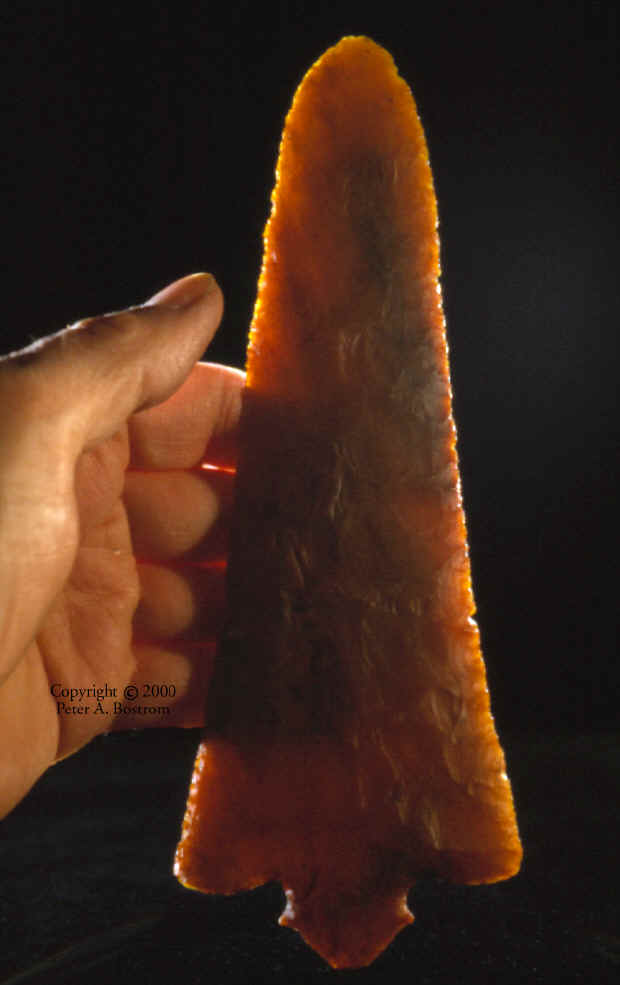|
ROSS POINT
WOODLAND PERIOD (HOPEWELL CULTURE)
2,000 TO
1,600 YEARS AGO
ORANGE TRANSLUCENT KAOLIN CHERT
SOUTHERN ILLINOIS
BOB ONKEN
COLLECTION
CIBA-CHROME
PRINTS OF THIS PICTURE ARE AVAILABLE--ORDERING PAGE
This is a magnificent example of a Ross point. It measures 8 1/8
inches long and is made of semi-translucent orange Kaolin chert from
southern Illinois. It's the "classic" style with a diamond base.
This one has two stylish points that stick out on each side of the base
that adds to the overall artistic look. It is thin and very skillfully
flaked.
Ross points were made during the Middle Woodland Period as
non utilitarian ceremonial objects. They were named by James B. Griffin
for examples found in Hopewell mounds in Ross County, Ohio. These types of
blades were ceremonially used by the Middle Woodland Hopewell people who
placed them in burial mounds along with other skillfully crafted
artifacts. There are several different styles but the diamond base variety
is the "classic". They seem to have been made as skillfully and
artistically as the craftsman could make them. Not only were they the
largest flaked stone artifacts that the Hopewell people produced they were
also made of the most exotic raw materials. Although the culture that made
them lived east of the Mississippi River some of these points were made of
obsidian from the Yellowstone Park area thousands of miles away. The
Hopewell culture developed extensive trade routes that brought in raw
materials from across the country. 
|
